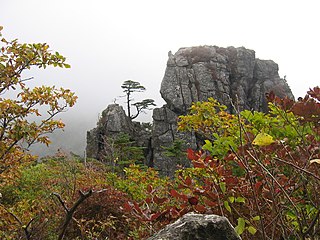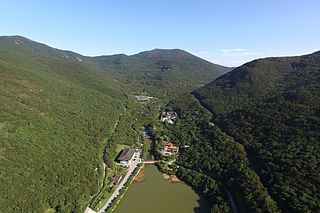 W
WDadohaehaesang National Park was designated in 1981 as the largest national park in South Korea. The total area is 2,321.5 km2 (896.3 sq mi) with 1,986.6 km2 (767.0 sq mi) being marine area and 334.8 km2 (129.3 sq mi) being land area. Main attractions of Dadohaehaesang National Park are Hongdo, Heuksando and Baekdo. In terms of biodiversity, 1,541 plant species, more than 11 mammal species including even orca or killer whales, 147 bird species, 885 insect species, 13 amphibious reptile species, 154 ocean water fish species, and 11 freshwater fish species have inhabited in this area.
 W
WHallyeo Haesang National Park in South Korea was designated as national park in 1968 in accordance with Natural Park Act. It comprises six districts: Sangju-Geumsan Mt. district, Namhaedaegyo district, Sacheon district, Tongyeong-Hansan district, Geoje-Haegeumgang district and Yeosu-Odongdo district. The total area is 545.63 km2 (210.67 sq mi) with 395.49 km2 (152.70 sq mi) being marine area and 150.14 km2 (57.97 sq mi) being land area.
 W
WJirisan National Park is a national park in South Korea, located on the boundaries of Jeollanam-do, Jeollabuk-do, and Gyeongsangnam-do. It is also located bordering the towns of Namwon, Gurye, and Hamyang. Jirisan was the first park to be designated as a national park in South Korea, in 1967. It is also the largest terrestrial national park in the country with an emphasis on biodiversity conservation, a well-known conservation programme on the Asiatic black bear and a pioneering restoration programme on damaged areas by overuse.
 W
WMudeungsan National Park, previously Mudeungsan Provincial Park, is located in the city of Gwangju and the province of Jeollanam-do, South Korea. The park was designated a provincial park on 22 May 1972 and was upgraded to national park status in 2012, making it South Korea's 21st national park. The park has an area of 75.45 km2 and is named after the 1,187 m tall Mudeungsan.
 W
WNaejangsan National Park is located in the provinces of Jeollabuk-do and Jeollanam-do, South Korea. It was designated as the 8th national park in 1971. It is named after the 763-metre (2,503 ft) mountain Naejangsan. The park is home to a total of 919 plant species and 1,880 animal species. 12 of the animals are endangered.
 W
WSuncheon Bay Ecological Park is a protected natural area near Suncheon, South Korea. It is a bay between Yeosu and Goheung peninsulas, located 8 km (5.0 mi) from the center of Suncheon, with 21.6 km2 (8.3 sq mi) of mudflats and 5.4 km2 (2.1 sq mi) of reed beds.
 W
WAs a public arboretum operated by South Jeolla Province and located in Daemun-ri, Gunoe-myeon, Wando County, it is South Korea’s only arboretum with an area of 2,050ha in the warm temperate zone and the country’s largest natural habitat for warm temperate forest.
 W
WWolchulsan National Park lies in Jeollanam-do province, South Korea. Designated as a national park in 1988, Wolchulsan National Park is South Korea's smallest at only 56.6 km2 (21.9 sq mi).